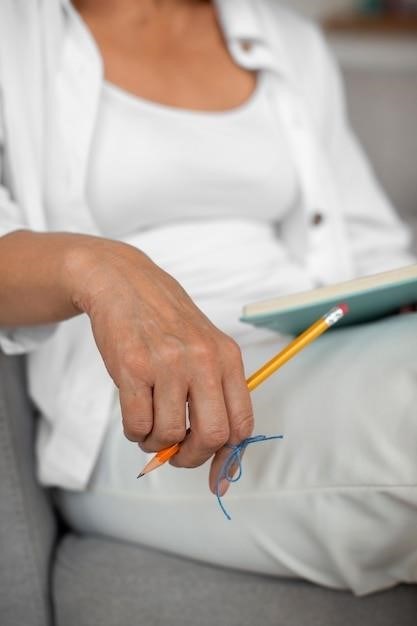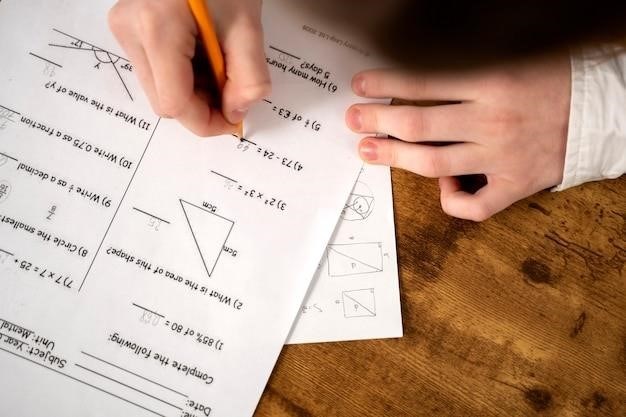What is a Manual Distraction?
Manual distractions are techniques that involve using your hands to engage in an activity that takes your mind off of something else, such as pain or boredom. These distractions can be physical, such as squeezing a stress ball, or they can be more complex, such as playing a game or doing a puzzle.
Definition
Manual distractions, also known as “hands-on distractions,” are techniques that involve using your hands to engage in an activity that diverts your attention away from a specific focus or stimulus. This can be anything from simple physical actions like squeezing a stress ball or playing with a fidget toy to more complex activities like knitting, drawing, or playing a musical instrument. The key element is the physical engagement of the hands, which serves as a sensory input that can effectively distract from the source of discomfort or boredom.
These distractions can be particularly useful in situations where other forms of distraction, such as listening to music or watching television, are not feasible or desirable. For example, during a medical procedure, a patient may find it helpful to engage in a manual distraction, such as squeezing a ball or tracing patterns on a piece of paper, to help them manage anxiety and pain. Similarly, someone experiencing chronic pain may find relief by engaging in a manual activity, such as knitting or crocheting, to divert their attention away from the pain signals.
The effectiveness of manual distractions is rooted in the principle of sensory modulation. When our hands are engaged in a physical activity, they send signals to the brain that compete with other sensory inputs, such as pain signals. This can help to reduce the intensity of the perceived pain or discomfort.
Types of Manual Distractions
Manual distractions can be categorized based on their complexity and the type of sensory input they provide. Here are some common types⁚
- Simple tactile distractions⁚ These involve engaging the sense of touch through repetitive or rhythmic actions. Examples include squeezing a stress ball, rubbing a textured object, or playing with a fidget spinner. These distractions are often used to alleviate anxiety, reduce tension, and manage pain.
- Creative distractions⁚ These involve using the hands to create something, such as drawing, painting, knitting, crocheting, or sculpting. These activities can be calming and therapeutic, providing a sense of accomplishment and diverting attention from unwanted thoughts or feelings.
- Interactive distractions⁚ These involve engaging in activities that require both physical and mental effort, such as playing a board game, solving a puzzle, or assembling a model. These distractions can be particularly effective in keeping the mind occupied and preventing boredom.
- Sensory-motor distractions⁚ These involve coordinating the movements of the hands and body, such as playing a musical instrument, typing, or writing. These activities can be stimulating and engaging, helping to reduce stress and promote relaxation.
The specific type of manual distraction that is most effective will vary depending on the individual’s preferences and the situation. It is important to experiment with different types of distractions to find what works best for you.
Examples of Manual Distractions
The realm of manual distractions is vast and diverse, encompassing a wide range of activities that can effectively divert attention and alleviate discomfort. Here are some specific examples of manual distractions that can be employed in various contexts⁚
- Squeezing a stress ball⁚ This simple yet effective technique involves repeatedly squeezing a soft, pliable object, providing tactile stimulation and releasing tension.
- Playing with a fidget spinner⁚ This popular toy features a spinning mechanism that engages the hands and provides a calming sensory experience.
- Drawing or doodling⁚ Engaging in artistic activities, such as drawing or doodling, can be a powerful distraction, allowing the mind to focus on the creative process and escape from unwanted thoughts.
- Knitting or crocheting⁚ These crafts involve repetitive hand movements that can be soothing and therapeutic, providing a sense of accomplishment and reducing stress.
- Solving a puzzle⁚ Engaging the brain in a puzzle, such as a crossword, Sudoku, or jigsaw, can be a highly effective distraction, demanding focus and mental engagement.
- Playing a musical instrument⁚ Music can be a potent distractor, and playing an instrument requires both physical dexterity and mental concentration, effectively diverting attention from discomfort.
These are just a few examples of the many manual distractions available. The key is to find activities that are engaging and enjoyable for you, and that can effectively take your mind off of whatever is causing you distress.
Benefits of Manual Distractions
Manual distractions offer a range of benefits, making them valuable tools for managing various challenges. Their effectiveness stems from their ability to engage both the mind and body, providing a multifaceted approach to distraction. Here are some key advantages of incorporating manual distractions into your life⁚
- Pain Management⁚ Manual distractions can be particularly helpful in managing pain, especially chronic pain. By diverting attention from discomfort, they can reduce pain perception and improve overall well-being.
- Stress Reduction⁚ Engaging in manual distractions can be a powerful stress reliever. The repetitive movements and focused attention involved in these activities can help calm the mind and reduce anxiety.
- Improved Focus⁚ Manual distractions can be used to enhance focus and concentration. By engaging the hands and mind in a specific activity, they can help block out distractions and improve cognitive performance.
- Enhanced Mood⁚ Engaging in enjoyable manual distractions can boost mood and promote feelings of happiness and well-being. The sense of accomplishment and relaxation associated with these activities can have a positive impact on emotional state.
- Creativity Enhancement⁚ Manual distractions, such as drawing or doodling, can stimulate creativity and encourage out-of-the-box thinking. The freedom of expression and exploration offered by these activities can spark new ideas and perspectives.
These benefits highlight the versatility of manual distractions as a valuable tool for managing pain, stress, and other challenges. By incorporating these techniques into your daily routine, you can experience a range of positive outcomes, enhancing your overall well-being.

Drawbacks of Manual Distractions
While manual distractions offer numerous benefits, they also come with certain drawbacks that should be considered. It’s important to be aware of these limitations to ensure that manual distractions are used effectively and safely.
- Potential for Overuse⁚ Overreliance on manual distractions can lead to neglecting other important tasks or responsibilities. It’s crucial to maintain a balance and avoid using distractions as a means to escape from real-world problems.
- Distraction from Important Tasks⁚ Manual distractions can sometimes hinder productivity by diverting attention from essential tasks. This can be particularly problematic in situations that require focused attention and concentration.
- Limited Effectiveness in Certain Contexts⁚ Manual distractions may not be effective in all situations. In some cases, they may not be feasible or appropriate, such as during critical tasks or when engaging in activities that require full attention.
- Potential for Addiction⁚ Certain manual distractions, such as video games or social media, can be addictive. Excessive use can lead to negative consequences, such as social isolation, sleep deprivation, and decreased productivity.
- Safety Concerns⁚ Some manual distractions can pose safety risks, especially when performed while driving or operating machinery. It’s essential to prioritize safety and avoid distractions that could compromise well-being.
By being aware of these drawbacks, individuals can make informed decisions regarding the use of manual distractions, ensuring that they are used in a balanced and safe manner. It’s important to use these techniques strategically and responsibly, recognizing their limitations and potential risks.
Manual Distractions in Different Contexts
Manual distractions find applications across a wide range of contexts, offering potential benefits in various situations. While their effectiveness may vary depending on the specific context, understanding their role in different settings can shed light on their diverse applications.
- Driving⁚ Manual distractions pose a significant safety hazard while driving. Activities such as texting, eating, or adjusting the radio can impair attention and reaction time, increasing the risk of accidents. It’s crucial to avoid all manual distractions while driving to ensure safe operation of the vehicle.
- Pain Management⁚ Manual distractions can play a role in pain management by diverting attention away from discomfort. Activities like squeezing a stress ball, playing with a fidget toy, or engaging in simple hand movements can help reduce pain perception and improve coping mechanisms.
- Medical Procedures⁚ Medical procedures often involve discomfort or anxiety, making manual distractions a valuable tool for patients. Simple activities like squeezing a stress ball or focusing on a specific object can help alleviate anxiety and improve patient comfort during medical interventions.
The effectiveness of manual distractions in different contexts depends on individual factors, the nature of the situation, and the specific techniques employed. However, their versatility makes them a valuable tool for managing discomfort, improving focus, and enhancing overall well-being in various settings.

Driving
Manual distractions pose a significant threat to road safety, as they divert attention away from the primary task of driving. These distractions can take many forms, ranging from simple actions like adjusting the radio or reaching for a drink to more complex activities like texting or using a navigation system. The impact of manual distractions on driving performance is multifaceted and can lead to a range of negative consequences.
When drivers engage in manual distractions, their attention is divided, reducing their ability to react promptly to changing road conditions. This can lead to delayed braking, lane deviations, and increased risk of collisions. Furthermore, manual distractions can impair spatial awareness, making it difficult to maintain a safe distance from other vehicles and to anticipate potential hazards. The consequences of manual distractions while driving can be severe, ranging from minor fender benders to serious accidents resulting in injuries or fatalities.
To mitigate the risks associated with manual distractions, it is crucial to prioritize safe driving practices. This includes refraining from using mobile devices, adjusting the radio or climate controls, or engaging in any other activity that takes your hands off the steering wheel or your attention away from the road. By remaining focused on the driving task, drivers can significantly reduce the likelihood of accidents and ensure their safety and the safety of others on the road.
Pain Management
Manual distractions can play a valuable role in pain management by diverting attention away from the discomfort and reducing the perceived intensity of pain. This technique, often employed by healthcare professionals and individuals with chronic pain, involves engaging the hands in a specific activity that requires focus and concentration. The act of engaging in a manual distraction effectively shifts the brain’s attention away from the painful sensation, thereby diminishing its perceived intensity.
Examples of manual distractions commonly used in pain management include squeezing a stress ball, playing with a fidget toy, or engaging in simple tasks like knitting or crocheting. These activities require the hands to perform repetitive motions, engaging the brain in a focused activity and diverting attention from the pain. By diverting attention, manual distractions can help reduce pain perception and improve the individual’s overall experience of pain.
While manual distractions are not a cure for pain, they can be an effective tool for managing pain in various situations. For individuals experiencing chronic pain, manual distractions can provide temporary relief and enhance their quality of life. However, it is crucial to note that manual distractions should be used in conjunction with other pain management strategies recommended by healthcare professionals.
Medical Procedures
In the realm of medical procedures, manual distractions serve as a valuable tool for managing patient anxiety and discomfort. These techniques are particularly helpful during invasive or uncomfortable procedures, such as blood draws, injections, or minor surgeries. By engaging the patient’s hands in a focused activity, manual distractions can effectively divert attention away from the perceived pain or unpleasant sensations associated with the procedure.
Healthcare professionals often employ a range of manual distraction techniques during medical procedures. Simple activities like squeezing a stress ball, playing with a fidget toy, or engaging in light hand exercises, such as making fists or stretching fingers, can provide a sense of control and distraction for the patient. These activities can help reduce anxiety, promote relaxation, and improve the overall patient experience. Additionally, healthcare providers may encourage patients to focus on a specific object or engage in a mental exercise, such as counting backwards, to further divert attention from the procedure.
The effectiveness of manual distractions in medical procedures has been supported by research. Studies have shown that manual distractions can significantly reduce pain perception, anxiety levels, and overall discomfort during medical procedures. This technique is considered a safe and non-invasive approach to managing patient distress and promoting a more positive experience during medical interventions.
Manual Distractions vs. Other Distraction Techniques
Manual distractions are just one of many distraction techniques used to manage pain, anxiety, and boredom. They often work in tandem with other methods, creating a multi-faceted approach to distraction. Cognitive distractions, for instance, involve engaging the mind in activities like mental exercises, counting, or focusing on positive thoughts. These techniques are particularly effective in situations where physical activity is limited, such as during medical procedures or while waiting for results.
Behavioral distractions, on the other hand, involve engaging in physical activities, such as walking, listening to music, or watching a movie. These techniques can be highly effective in diverting attention from pain or discomfort, especially when combined with manual distractions. For example, while walking, you might squeeze a stress ball or engage in a simple hand exercise to further enhance the distraction effect.
Physiological distractions involve techniques that alter physiological processes to reduce pain or discomfort. Deep breathing exercises, for instance, can help to regulate heart rate and reduce anxiety. Similarly, relaxation techniques like progressive muscle relaxation can help to alleviate muscle tension and reduce pain perception. While these methods are not strictly manual distractions, they often complement manual techniques, creating a holistic approach to managing discomfort.
Research on Manual Distractions
Research on manual distractions is ongoing, with studies exploring their effectiveness in various contexts. For instance, research on pain management has shown that manual distractions, such as squeezing a stress ball or engaging in hand exercises, can effectively reduce pain perception during medical procedures like venepuncture. The mechanism behind this effect is thought to be related to the redirection of attention away from the painful stimulus and towards the manual activity.
In driving contexts, research has focused on the impact of manual distractions on driving performance. Studies have shown that activities like adjusting the radio, texting, or eating while driving can significantly impair driving ability, increasing the risk of accidents. This research highlights the importance of minimizing manual distractions while driving to ensure safety;
Beyond pain management and driving, research is exploring the use of manual distractions in other areas, such as education and mental health. For example, some studies suggest that manual distractions, such as doodling or fidgeting, can improve focus and attention in children with ADHD. While further research is needed, these findings suggest that manual distractions may have broad applications in various fields.


